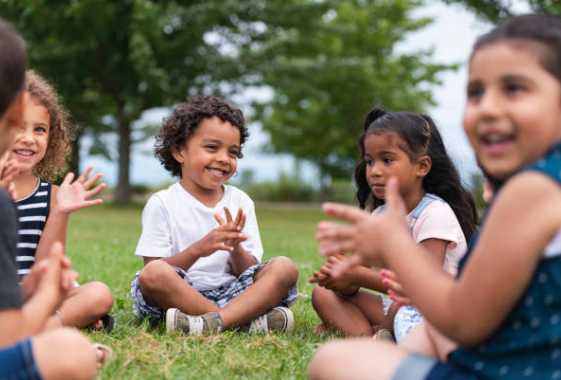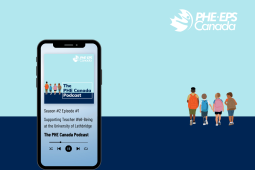Physical Education + Math = Positive Results

Previously published in Volume 82, Issue 2
There is no question that childhood obesity is an epidemic (World Health Organization, 2016). It’s not a ‘problem,’ not a ‘concern,’ but an epidemic. And that’s true not just in one or two countries, but on a global scale (Nishtar, Sania et al., 2016). According to the US National Department of Health there are only two possible solutions: The first is for children to eat less and the second is for them to exercise more (Kumanyika, 2008).
As a teacher, I know I can offer ideas for better food choices, make suggestions for portion control and educate on the risks and effects of overeating, but I can do nothing to stop students from eating or provide healthier food for them. What I can do, though, is get them more active, more often (Dudley, D., Peralta, L., & Cotton, W., 2015).
Government on board, instigating change
In 2014, the Australian government also realized that this was the perfect solution to combat childhood obesity. The department of education increased the mandated amount of time students needed to be engaged in moderate to vigorous physical activity (MVPA) during the school week from 120 to 150 minutes (New South Wales Department of Education, Australia, 2015).
Multitasking to meet MVPA and academic goals
Proposing a solution was fantastic, but now there was a new problem: How were teachers going to incorporate an additional 30 minutes of physical activity into their already overcrowded timetable and still meet the time requirements for all their other curricula (New South Wales Department of Education, 2006)?
The answer was simple: dual instruction, also known as physically active learning. At least, it seemed the obvious answer for one school in rural Queensland. Within months of the announcement physical and health education teacher Rebecca Johnston gained the informed consent of her school principal, parents and the 21 grade 5 students in her class and started a 10-week trial to test the benefits of physically active learning in mathematics.
Trial program nets big results
Johnston started by designing a 62-question test to set a pre-implementation benchmark and then assess again, after the trial period. The test measured students’ abilities in addition, subtraction, multiplication and division, converting fractions, decimals and percentages, converting using the metric system, using ordered pairs to plot position and converting time between 12- and 24-hour clocks. Johnston then used Math & Movement exercises and brain breaks to engage her class to move for 30 minutes every day for 10 weeks.
At the end of the 10-week period the students’ pre- and post-test performance scores were assessed to see if there were any significant differences (alpha = 0.05). Results showed significant improvement for the Active Math project (p<0.01) and individual student improvement from pre to post-test can be seen in Figure 1 below.
Statistical analysis revealed a significant positive impact on class arithmetic performance from pre=32.9 to post=47. It also showed that the lower-range threshold in the post-test was higher than the class average in the pre-test (pre-test =32.9; post lower threshold = 37.6) and that the cohort performance was closer together with a standard deviation pre =11 to post =9.4
It must be noted that those students who did best on the pre-test had the smallest gain in achievement in the post test while those who continued to struggle with the concepts had less gain than the mean but for the majority of the class the results were well above expectation. But that is not the best part. What was truly amazing was the change in the students’ attitude towards their learning.
Beyond grade improvements
The pre- and post-implementation test asked students to reflect on how they felt about specific math concepts using a happy (confident, high recall), neutral (unsure, limited recall) and sad (unconfident, no idea) face rating scale. There was a significant increase in student confidence levels about math concepts from pre- to post-tests and a decrease in students feeling a lack of confidence. This can be seen in Figure 2 below.
One student reported, “I now feel so much more confident in math.” While one parent reported, “My son feels like going outside and doing the math activities helps him. He has not been confident with math in the past. Seeing how much the active math engages the kids is great” (Johnston, 2015).
This small study clearly demonstrates that dual instruction combining mathematics with physical education can both increase the amount of time students engage in MVPA and lead to significant improvements in students’ mathematical ability and overall confidence in the subject.
Resources
Rachel McCann has developed seven full-year teaching programs for years K-6 and has become an ambassador for active, healthy kids and a great proponent for helping reduce obesity in children. Access and download teaching activities on her website www.mathsnmovement.com.








